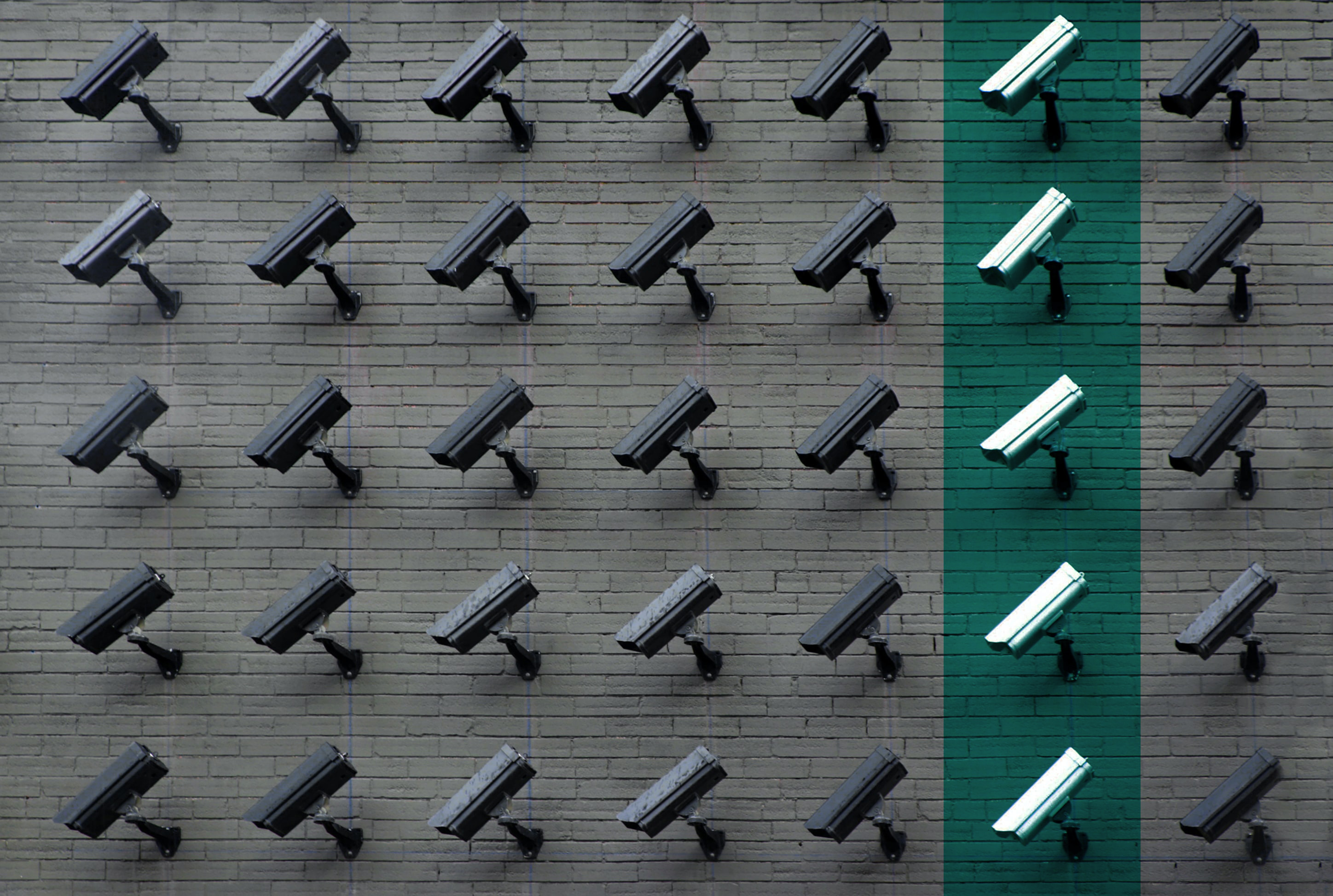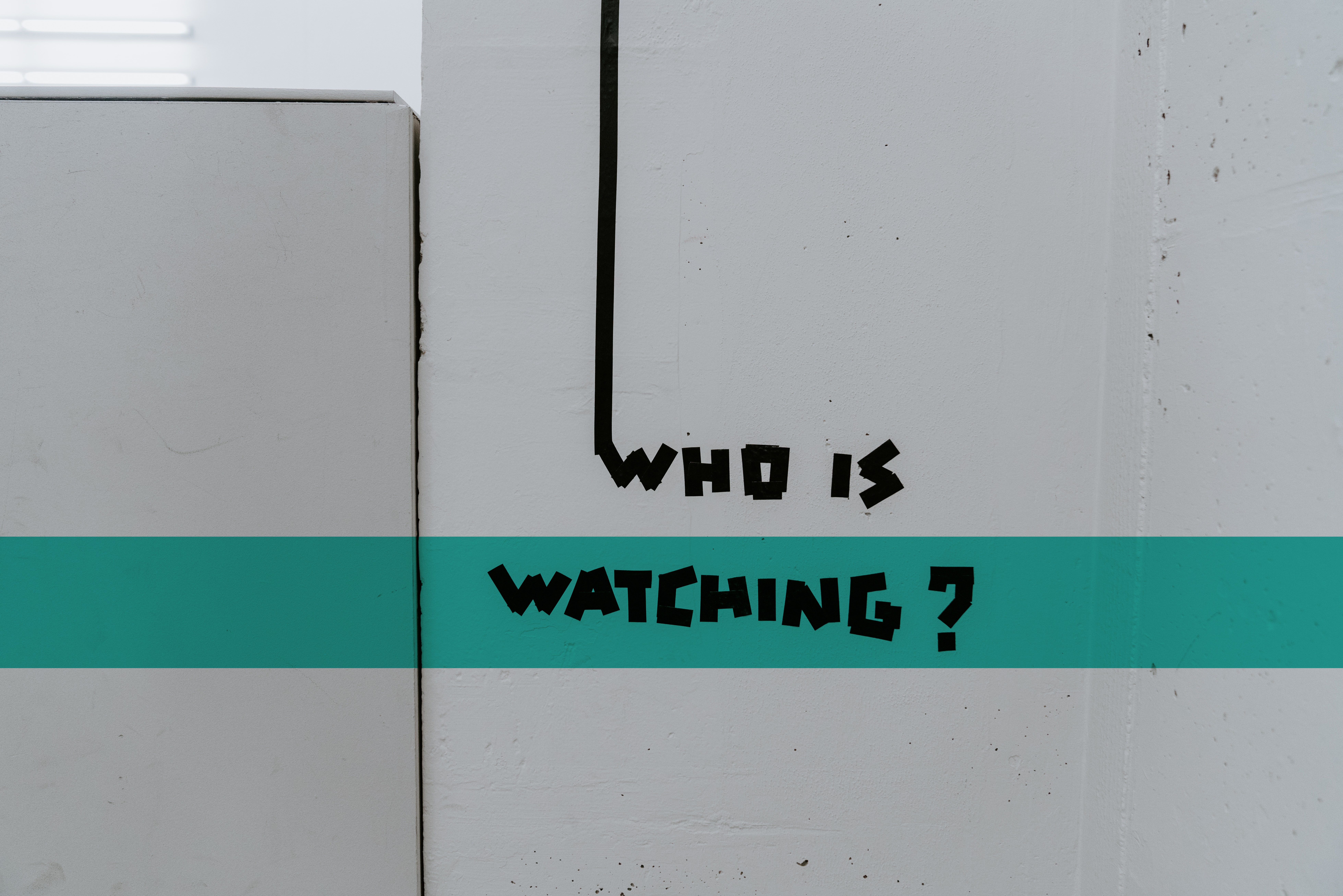Street-Level Surveillance: Public Space into Police State
For the best experience, please view on desktop.

Base Image by Alexandre Debiève. | Unsplash License
Today, cities across the world are developing under an unprecedented scale and sophistication of digital tools, becoming rapidly and seamlessly integrated within our urban infrastructures. Invisible systems of digital interconnectedness track and analyze vast amounts of information about people—supposedly to apply data-informed solutions to urban issues. Law enforcement agencies increasingly adopt surveillance technologies as a tactic to reduce crime and increase security in our communities; however, the indiscriminate use of street-level, military-grade surveillance technologies have begun to blur the lines between security and oppression in our public spaces.
Normal people going about ordinary life in the city are being implicated in a massive data extraction operation at every stoplight, intersection, subway station—disproportionately affecting marginalized communities.
This project investigates the US law enforcement’s use of public urban space as a covert tool for a massive data extraction operation, and how it conflicts with privacy in modern urban life.
Surveillance Technology Distribution & Data Flows
A vast majority of the nation’s surveillance technology is deployed by city police department agencies and sheriffs offices, compared to other law enforcement agencies. This city-level deployment of surveillance technology implicates cities across the US as the primary scope and jurisdiction at which data extraction occurs. The geographic boundary of the city is being used as a method to facilitate and serve the police state.
Surveillance Technologies (Hover box to see definitions)
Kirthi Balakrishnan + Mia Winther-Tamaki | Street-Level Surveillance: Public Space into Police State | Conflict Urbanism 2022 | Definitions from Atlas of Surveillance.
The deployment of police surveillance has hierarchical jurisdiction and data flows. The local level data collected by city police departments flow upwards into state and federal law enforcement agencies’ intelligence systems. At the top of the hierarchy is the federal homeland security intelligence offices that have access to a vast and robust system of intelligence analysis, informed by data collected by cities and states across the nation.
Surveillance Hierarchy (Hover node to see distribution)
Kirthi Balakrishnan + Mia Winther-Tamaki | Street-Level Surveillance: Public Space into Police State | Conflict Urbanism 2022
Surveillance technologies can be broken down into two main categories, data extraction tools and data analytical tools. Data extraction tools are surveillance devices deployed into public spaces to collect data from its environment. Data analytical tools are software that analyze and predict trends based on the data collected by the data extraction tools.
Information collected by data extraction tools flow into many different types of data analysis softwares that overlap and interlock to create a powerful security network operation. The data alone is not necessarily where the most dangerous consequences lie— it is when the data is input into a series of sophisticated analytical software software, at which the data becomes significantly more dangerous. Data analysis and predictions made by law enforcement use analysis softwares that are often equipped with machine learning and artificial intelligence (AI) technologies which essentially teach computers how to understand what data means, and predict what trends and behaviors will occur in the future.1 Facial recognition, predictive policing, and other analytics reinforce racial bias when they “learn” from historic crime-related datasets —which are fraught with discriminatory practices. Trevor Paglen, an American artist known for his work in digital surveillance, described racism in AI as “not a bug, but a feature,” in an interview.2
Machines learn from humans— and human history is inextricable from racism and abuse. Feeding these data as input into a computer language will teach the computer to speak that language.
When looking at the top types of technologies used by agencies across the US, large urban areas at the periphery of the country more commonly deploy analytical tools, including Los Angeles, San Francisco, New York City, Florida, Atlanta, and Chicago.
Looking at the variety of surveillance technologies deployed is also useful when locating areas with more sophisticated surveillance operations. Surveillance systems perform more effectively when different types of surveillance technologies operate in tandem. Similarly large urban areas along the edges of the US have agencies that deploy the most diverse types of surveillance technologies.
Kirthi Balakrishnan + Mia Winther-Tamaki | Street-Level Surveillance: Public Space into Police State
Conflict Urbanism 2022 | Partial Data from Atlas of Surveillance.
Private Technology Vendors: Domestic & International Firms
US law enforcement surveillance technologies operate in an immense network of public-private partnerships—government agencies deploy the surveillance technologies across the nation, and private technology firms manufacture them. The power held in surveillance systems is largely related to who owns and accesses the data; private firms in the US that manufacture law enforcements’ technologies can use the generated civic data generated for their own interests.
Kirthi Balakrishnan + Mia Winther-Tamaki | Street-Level Surveillance: Public Space into Police State
Conflict Urbanism 2022 | Partial Data from Atlas of Surveillance.
Connecting the types of US agencies’ surveillance technologies, the vendor for each technology, and the origin or headquarters of each vendor showed the murky supply chains behind. Vendors had both domestic and international origins.
Kirthi Balakrishnan + Mia Winther-Tamaki | Street-Level Surveillance: Public Space into Police State
Conflict Urbanism 2022 | Partial Data from Atlas of Surveillance.
A large majority of US-made surveillance technology is manufactured in Santa Monica, California. This is because Ring, Amazon’s home surveillance camera system, has partnerships with about 1,332 different law enforcement agencies, comprising a large proportion of domestic-based surveillance technology. Ring is Amazon's smart home security system, where users install Ring surveillance cameras at their front doors and may choose to partake in Neighbors, Ring’s social media app. The app, known as the“new neighborhood watch,” allows neighbors to report “suspicious activities” within a certain radius of their home’s location.
Ring’s local security communities and its many police partnerships form a network of neighborhood surveillance3. Amazon has been criticized for collecting an enormous amount of data from Ring users, not disclosing the full details of its partnership with law enforcement, and for reinforcing the racial biases of the communities that use it.
“Ring sells a very particular message: while you shouldn’t trust your neighbors, you can trust Amazon to help police it.”4Though individual homes’ front doorsteps are not public space, the combined footage from different users throughout a neighborhood creates hyperlocal, intimate surveillance networks, accessible to police departments.
Police departments did not previously have such small-scale surveillance access of neighborhoods, front lawns, and neighbors’ behavioral interactions.
Amazon’s combined database from its expansive e-commerce distribution network and its Ring-Neighbors surveillance network creates a massive dataset, highly tied to locational city data.
Kirthi Balakrishnan + Mia Winther-Tamaki | Street-Level Surveillance: Public Space into Police State
Conflict Urbanism 2022 | Partial Data from Atlas of Surveillance.
When looking at international vendors of US surveillance technology, China stands out as the most prominent vendor—almost entirely due to DJI drone manufacturing. Internationally manufactured, US-deployed surveillance technologies have significant data privacy implications because most countries have different data privacy policies.
In China, every technology company is legally required to turn in any collected data to the Chinese government.
DJI, the Chinese tech company responsible for manufacturing a majority of the US law enforcement agencies’ drones, was recently added to the US Department of Treasury’s investment blacklist after discovery of DJI’s role in the surveillance of the Uyghur Muslim population in the Xinjiang Region’s concentration camps5. Cyber security researchers have since found the data collected from DJI aligns with Chinese government surveillance practices, which require drones to be linked to a user’s identity,” giving the government access to images, videos, biometric data, location data, and all other data generated by drones6. The US federal government has largely stopped using drones manufactured by Chinese companies, although state and local-level enforcement continues to deploy them.
When Chinese drones fly over public spaces in the US—like the 2020 incident in Minneapolis during which a homeland security drone flew over a George Floyd protest—it is unclear if Americans’ data is being extracted and sent to the vendor’s homeland databases. Many are suspicious that the Chinese government has full access to Americans’ data but these claims are hard to confirm, as technology firms go to great lengths to keep their information about their data flows, uses, and applications private.
Control & Regulate Surveillance
Surveillance technologies and data collection in public spaces are not inherently bad.
Surveillance technology is just a tool, and data is a type of information. It is only through the specific ways and contexts through which surveillance tools and public information are used that weaponize them. Body-worn cameras are an example of this—body camera footage can be used to surveil people who police interact with and third parties who may have no knowledge that they are being monitored. The footage can also be combined with analytics software, such as facial recognition. However, when there is police misconduct or an abuse of power, body camera footage can be used to hold police accountable. In criminal investigations, video footage serves as extremely valuable evidence that helps build and strengthen cases. For example, when Derek Chauvin was pressing his knee into George Floyd’s neck in May of 2020, Darnella Frazier took out her phone and recorded the murder, because “[she] knew if [she] didn’t, no one would believe [her].”7 Frazier surveilled the police officer— and her video served as powerful evidence for criminal charges for four police officers and the conviction of Chauvin.

Photo by Lianhao Qu. | Unsplash License
Surveillance technologies have the capacity to improve city life and safety— but only if strictly controlled and regulated. Government needs to hold its own agencies accountable in a regulatory and technological balance. Regulations such as the 2022 NYC Geolocation Tracking Ban bill must be advocated for and enacted. The bill proposes that search of geo-tagged data of anyone who is not under criminal suspicion is prohibited.8
Bottom-up advocacy for civic privacy is crucial—local nonprofit groups such as the Surveillance Technology Oversight Project do important work to abolish local governments’ mass surveillance through advocacy, litigation, and education.9
Additionally, data security infrastructure, such as Civic Data Trusts and blockchain technology can help to address issues of transparency, accountability, and privacy. Civic Data Trusts employ civic participation and an independent trustee to make unbiased data-related decisions. Blockchain technology can decentralize the storage of data into an encrypted ledger, which makes data immutable and far less likely to enter the hands of actors with ulterior motives.
Conclusion
Public space is foundational to our democracy, communities, and civil liberties. Yet, our streets, parks, and sidewalks are becoming policed and privatized in an unprecedented way. Data is at the heart of these issues, and cities need to provide the protections necessary for a vibrant urban life where people have ownership over their own information.
Technological advancements in our cities do not have to come at the expense of our privacy and freedom.
Planners, policymakers, and technologists need to step up to the rate at which cities are digitally evolving, and push against the unparalleled invasions of privacy.

Photo by Claudio Schwarz. | Unsplash License
Sources
- Atlas of Surveillance“Data Library.” Accessed April 13, 2022. https://atlasofsurveillance.org/library
- Paglen, Trevor. Interview with Trevor Paglen by Mia and Kirthi. Phone Call, March 29, 2022.
- Ring. “Home Security Systems | Smart Home Automation.” Accessed May 6, 2022. https://ring.com
- Haskins, Caroline. “Amazon’s Home Security Company Is Turning Everyone Into Cops.” Vice (blog), February 7, 2019. https://www.vice.com/en/article/qvyvzd/amazons-home-security-company-is-turning-everyone-into-cops.
- BBC News. “US Sanctions Drone-Maker DJI,” December 17, 2021, sec. Technology. https://www.bbc.com/news/technology-59703521.
- Mozur, Paul, Julian E. Barnes, and Aaron Krolik. “Popular Chinese-Made Drone Is Found to Have Security Weakness.” The New York Times, July 23, 2020, sec. U.S. https://www.nytimes.com/2020/07/23/us/politics/dji-drones-security-vulnerability.html.
- Washington Post. “Darnella Frazier, the Teen Who Filmed George Floyd’s Murder, Awarded a Pulitzer Citation.” Accessed May 6, 2022. https://www.washingtonpost.com/media/2021/06/11/darnella-frazier-pulitzer-george-floyd-witness/.
- Bill Search and Legislative Information | New York State Assembly.” Accessed May 6, 2022. https://nyassembly.gov/leg/?default_fld=&leg_video=&bn=A10246&term=2019&Summary=Y&Actions=Y&Memo=Y&Text=Y.
- S.T.O.P. - The Surveillance Technology Oversight Project. “Our Vision.” Accessed May 6, 2022. https://www.stopspying.org/our-vision.